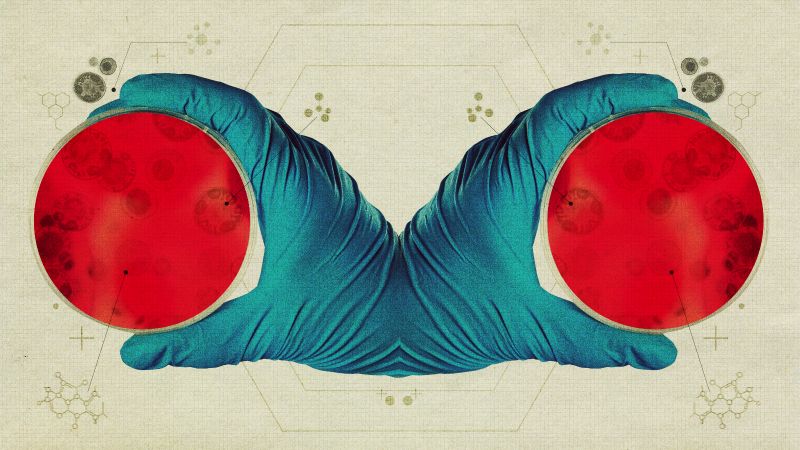Scientist Kate Adamala doesn’t remember exactly when she realized her lab at the University of Minnesota was working on something potentially dangerous — so dangerous in fact that some researchers think it could pose an existential risk to all life forms on Earth.
She was one of four researchers awarded a $4 million US National Science Foundation grant in 2019 to investigate whether it’s possible to produce a mirror cell, in which the structure of all of its component biomolecules is the reverse of what’s found in normal cells.
The work was important, they thought, because such reversed cells, which have never existed in nature, could shed light on the origins of life and make it easier to create molecules with therapeutic value, potentially tackling significant medical challenges such as infectious disease and superbugs. But doubt crept in.
“It was never one light bulb moment. It was kind of a slow boiling over a few months,” Adamala, a synthetic biologist, said. People started asking questions, she added, “and we thought we can answer them, and then we realized we cannot.”
The questions hinged on what would happen if scientists succeeded in making a “mirror organism” such as a bacterium from molecules that are the mirror images of their natural forms. Could it inadvertently spread unchecked in the body or an environment, posing grave risks to human health and dire consequences for the planet? Or would it merely fizzle out and harmlessly disappear without a trace?
In nature, the structure of many major biomolecules is right- or left-handed, although it’s not clear why life evolved this way. It’s a property known as chirality that was first discovered by French scientist Louis Pasteur in 1848. For example, DNA and RNA are made from “right-handed” nucleotides, and proteins are made from “left-handed” amino acids. Just as a right-handed glove cannot fit a left hand or how a key precisely fits a lock, interactions between molecules often depend on chirality, and living systems need consistent patterns of chirality to function properly.
In a mirror cell, all its molecules would be replaced with mirror-image versions. Such a development is hypothetical; even creating a synthetic cell with natural chirality that mimics its normal living counterparts isn’t yet possible, but it’s an active and exciting area of research that Adamala and several other research groups are pursuing. Scientists can make many of the components from non-living precursors, and they could soon engineer normal synthetic cells, which in theory could then create single-cell life forms, such as bacteria.
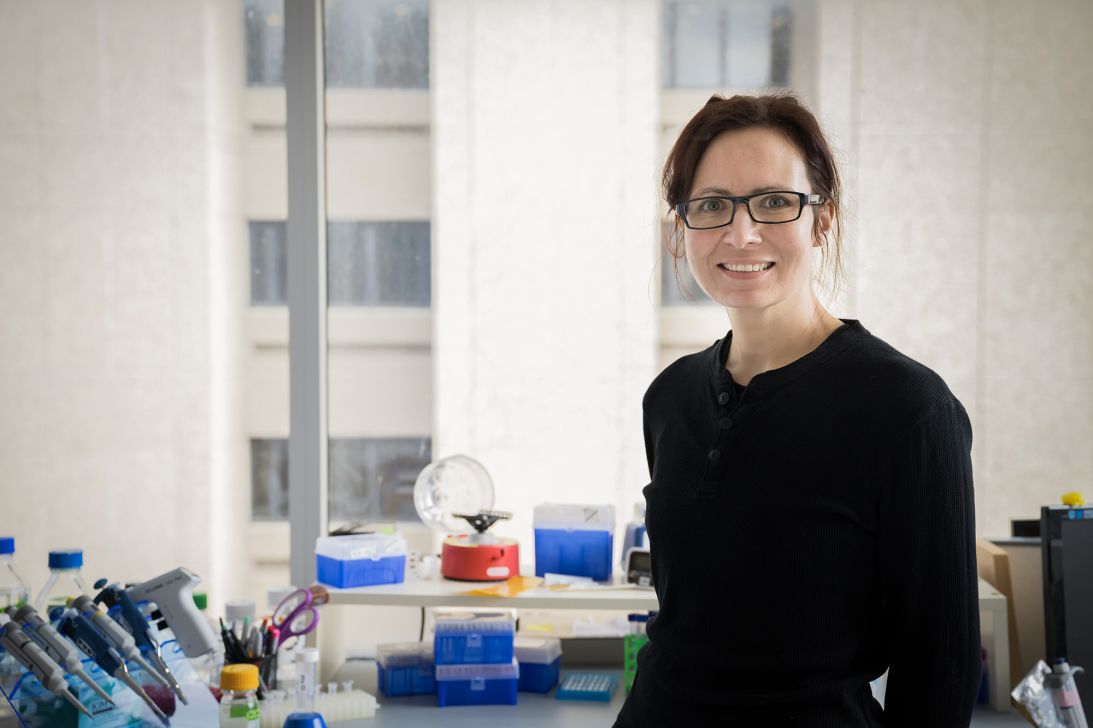
By themselves, small mirror molecules do not pose any particular risks, and scientists can already safely make proteins and carbohydrates with opposite chirality, which hold pharmaceutical promise.
Complete mirror cells, however, remain out of reach. Adamala and her colleagues didn’t make much progress with their investigations on that front. The Covid-19 pandemic meant that the research was slow to get off the ground and, more crucially, informal conversations Adamala had with colleagues in other fields, at conferences and other forums, began to sow alarm.
“People that are experts in biosafety, immunology and ecology, they didn’t think that something like a mirror cell was actually likely, they thought it science fiction,” she said.
One thing these other scientists brought up that was extremely surprising to her was that “mirror cells would likely be completely invisible to the human immune system,” Adamala added. “I used to think the immune system will find a way to detect any invading biomolecules. I didn’t know how chiral the immune system was.”
Over the course of 2023 and 2024, those ad-hoc conversations coalesced into a working group of 38 scientists, including Adamala, and in December 2024 the group published a bombshell article in the high-profile scientific journal Science titled “Confronting Risks of Mirror Life,” which summarized the findings of a detailed 300-page report compiled by the same group.
The report concluded that mirror cells could become a reality in the next 10 to 30 years and detailed the potentially devasting consequences if mirror bacteria were released into an environment and spread, evading natural biological controls and acting as dangerous pathogens.
Since then, a nonprofit called Mirror Biology Dialogues Fund has sponsored a series of meetings to develop recommendations aimed at averting the threat scientists think mirror life could pose. While there’s broad agreement that mirror organisms such as bacteria should not be created, there’s much debate over what — if any — limits to investigating mirror biology should exist.
Dozens of experts met at a two-day conference on engineering and safeguarding synthetic life in Manchester, UK, in September to discuss where red lines should be drawn to restrict research into technologies that could enable the creation of mirror organisms.
“There is the possibility that, with admittedly a great deal of work, we could create something which could grow inexorably, spread across the planet and displace or kill many, many forms of life, including us, the animals around us, the plants around us, and even some of the microbes,” said David Relman, a professor of microbiology and immunology at Stanford University, who attended the meeting at the University of Manchester’s Institute of Biotechnology.
Relman, like Adamala, was one of the early members of the working group and remembered keeping initial conversations under wraps. “We didn’t want to be unduly alarmist. We also didn’t want to sound like crackpots,” he recalled. “I think we all hoped that we would quickly learn there was some fatal flaw in this logic, but it started to bother me enough to wake me up at night.”
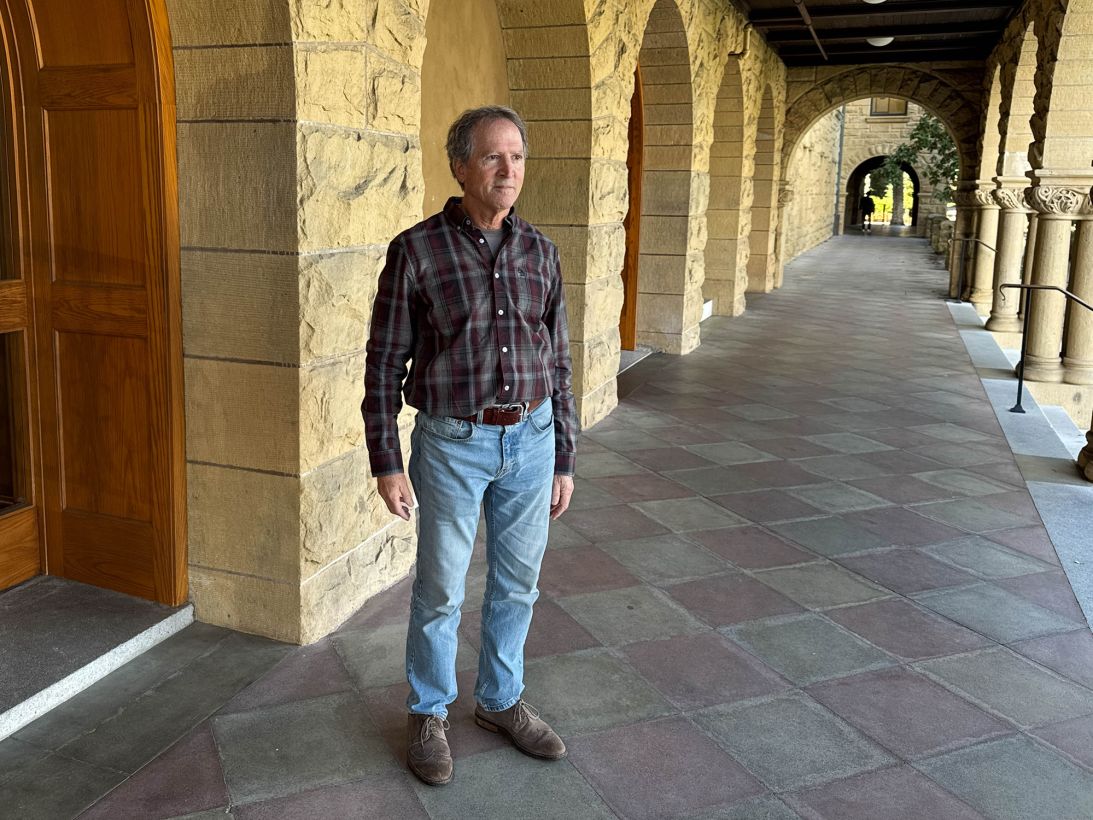
Their alarm stemmed from the fact that, because natural life is chiral, interactions between natural organisms and mirror bacteria would be profoundly unpredictable. While the first mirror bacterium would likely be extremely fragile, limiting its growth and survival, it could persist, given the right nutrients. Ultimately, it might act like an invasive species, disrupting ecosystems without predators to keep it in check.
Relman said mirror bacteria could potentially evade critical parts of plant, animal and human immune systems, which would have difficulty detecting or killing them.
Once inside a human, a mirror bacteria could hypothetically replicate to extremely high levels in the body, causing its host to experience something similar to septic shock. Potential medical countermeasures — including most antibiotics — are chiral, meaning they likely would not be effective on mirror bacteria, although it is possible that mirror versions of antibiotics could be produced.
And while biocontainment measures, such as those scientists use to work with dangerous pathogens, could theoretically prevent mirror bacteria from leaving a lab, those measures would be vulnerable to human error or deliberate misuse.
While such a doomsday scenario is far from a sure thing, and there’s great uncertainty about the risks mirror life would pose given it doesn’t yet exist, no one has been able to totally refute the risks.
“At first, people were questioning whether those concerns are actually as serious as we thought they were. And so we were trying to poke holes in it, trying to find ways in which we were wrong,” Adamala said. “The more we looked, the more we were certain, and more people were coming on board to this idea that there actually is no safe way to make a mirror cell.”
Relman characterized mirror life as the first plausible existential risk he had encountered in a long career that has included investigating the 2001 deadly anthrax letters and Havana Syndrome, a mysterious health ailment that has impacted spies, soldiers and diplomats around the world.
He said what gives him cause for optimism is the fact that, unlike other contentious and risky areas of science such as cloning, mirror life doesn’t exist yet — it isn’t a “here and now thing” that would be harder to stop. “There’s a real chance we don’t have to have this happen to us unless we choose to do so.”
Other experts involved in the mirror life discussions in Manchester, however, said it is important to tread cautiously and not make kneejerk decisions that could thwart scientific progress. They emphasized that research to develop individual mirror molecules should be distinguished from that to develop mirror cells or organisms — even though both are sometimes termed mirror life or biology.
Michael Kay, a professor of biochemistry at the University of Utah who is focused on developing drugs — primarily against infectious diseases like HIV — based on mirror-image molecules, said he isn’t “so supportive” of red lines that would completely block an area of study.
“I feel like they’re too blunt of a tool,” Kay noted, referring to blanket regulations.
Because the human body doesn’t recognize them as readily, mirror molecules such as proteins and nucleic acids resist degradation and are more stable there — useful traits for potential therapeutic drugs. And since mirror proteins cannot self-replicate, they do not pose the same risks as a mirror cell. However, Kay is worried that through unclear messaging, the word “mirror” will become automatically equated with risky research and it will limit innovation in this area.
“Mirror molecules are inert chemicals with tremendous benefits,” he explained. “This is very early (research), but they’re here and there’s many more in clinical trials. In the next five or 10 years, this is going to be a big class of drugs.”
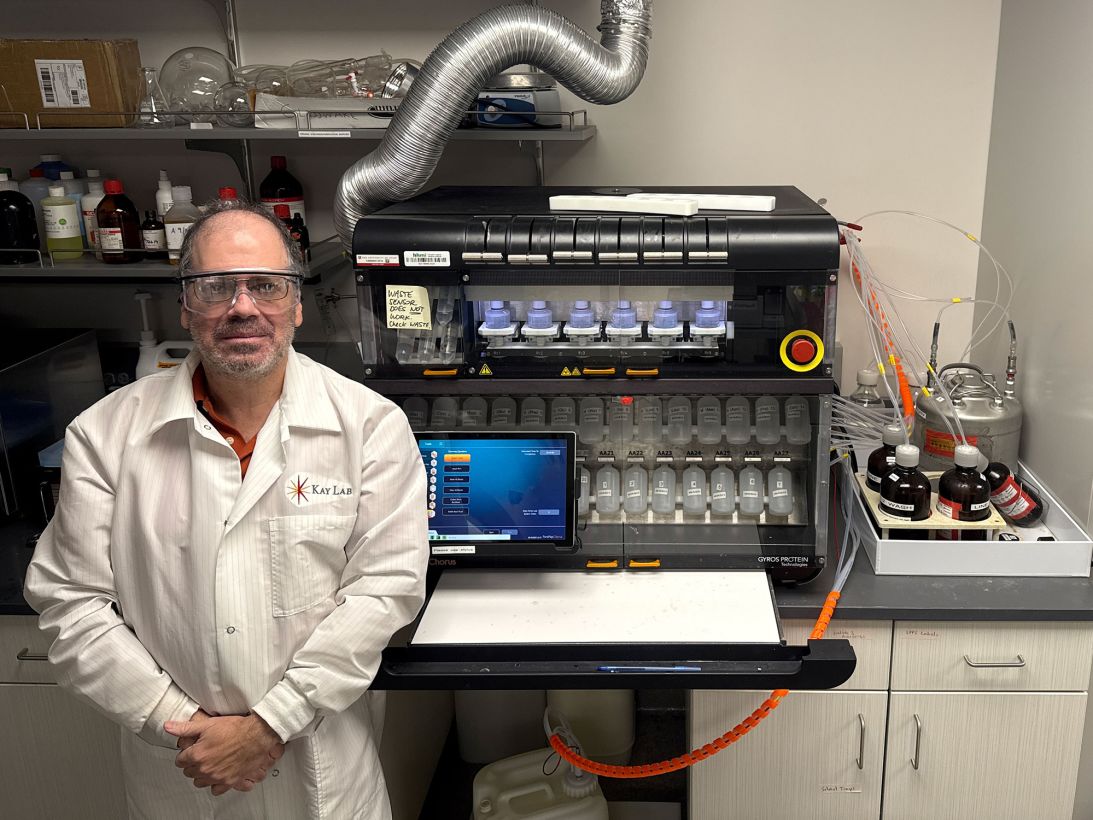
He also noted that the risks of mirror cells or organisms, should they be unleashed, are unknown. “This (organism) could just starve to death, which we think is probably the most likely thing, or consume all the resources in the Earth and compete with all existing life,” Kay said. “That’s a huge range.”
However, he said the ongoing attempts to weigh the risks are important: “I think any effort that buys us time to better understand and better consider the risks and to, you know, just be more deliberate in the way the technologies are advanced, rather than just having a free for all, I think that’s beneficial. And we have the time, you know, for that to happen,” Kay added. “This is not imminent.”
Many synthetic biologists, including Adamala, are seeking to make a synthetic cell — with natural chirality — from scratch out of non-living parts. The aim is to create something that mimics biological processes to shed light on the cascade of biochemical reactions that allowed life to first arise hundreds of millions of years ago and help solve problems in medicine, industry, the environment and basic research.
“A synthetic cell would be like operating system for life: it would let us engineer biology at unprecedented scale, with precision that we can’t get in natural cells,” Adamala explained.
“We will build models of cellular processes, both healthy and diseases, to understand how healthy cells can be made to work better and how diseases start,” she added.
It’s possible that scientists will hit that milestone of a synthetic non-mirror cell soon, perhaps within a year, according to John Glass, a professor and leader of the La Jolla, California-based J. Craig Venter Institute’s Synthetic Biology Group. And if a normal cell with natural chirality can be created from lifeless molecules, then, in theory, he said a mirror-image cell could be created from mirror-image molecules using the same methods.
Glass’ initial conversations with Relman in April 2024 about the potential risks of mirror life left him “shaken,” he remembered. “It made me wonder if the thing, the work that I have been doing for years, could be enabling, one day, the mirror bacteria-based Armageddon that we fear,” he said.
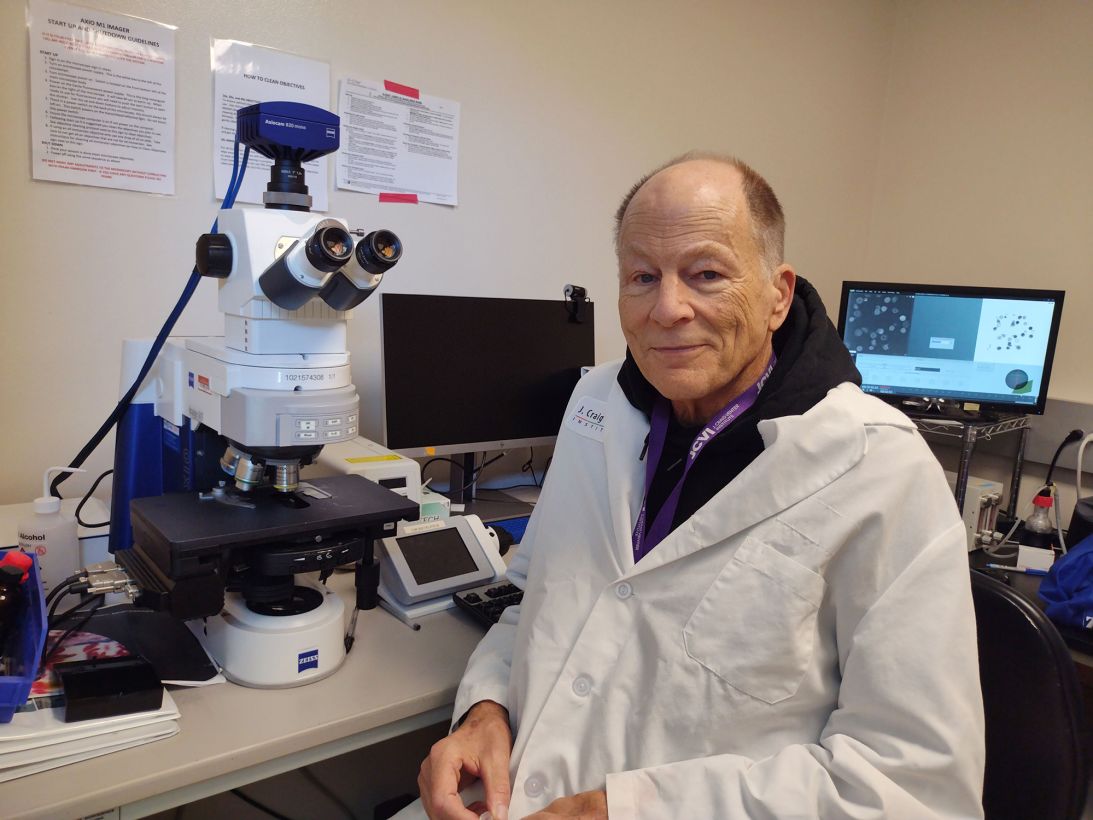
However, most experts agree that making a synthetic cell with natural chirality is safe, because if a bacterium made from a synthetic cell were to enter an environment, it would be subject to the normal controls of any ecosystem, making it easy prey to natural predators such as viruses that target bacteria. Thus, it wouldn’t be able to spread uncontrollably.
For Glass, an obvious red line is for scientists to refrain from making a mirror ribosome, a biological machine found in a cell’s cytoplasm that makes proteins. While that advance would still be far from creating a mirror cell, he said if you instead draw the line at the last step — creating a mirror membrane and then assembling all the constituent parts — it’s too late.
But Kay at the University of Utah feels differently. His lab is focused on improving the chemical synthesis of mirror proteins, a process which is currently very inefficient. As an alternative, he is interested in exploring making a mirror image ribosome.
“The idea is that if we could make a mirror ribosome, we could then use that to make these products with much higher quality, much longer proteins, in a way that might be compatible with pharmaceutical use,” Kay explained.
“But there is concern, in this group — and I’m undecided right now — whether having that would be such a valuable tool that it would make the development of mirror life inevitable or too easy for others,” he added.
Adamala, along with her colleagues, chose not to renew her research grant, ending her lab’s work on mirror cells. She is focusing instead on discussions around how to regulate mirror life research.
To the best of her knowledge, she said, no scientists are pursuing the creation of a mirror cell. In February 2025, nearly 100 researchers, funders and policymakers signed an entreaty arguing that “mirror life should not be created unless future research convincingly demonstrates that it would not pose severe risks.”
Ultimately, signatures and self-restraint may be not enough. Adamala, Glass and Relman all said they hope their conversations will inform more formal restrictions or policies at international or national level.
There was no concrete outcome from the Manchester meeting, and related discussions continued at a September workshop hosted by National Academies of Sciences, Engineering, and Medicine’s Standing Committee on Advances and National Security Implications of Transdisciplinary Biotechnology.
“Pretty much everyone agrees that we should not make a living mirror cell. That’s the baseline but below that people have a lot of different ideas where should we stop the research,” Adamala said. “Right now, the scientific community can’t really agree on the red lines.”
Relman said the goal is that the proactive efforts the group is making will not only protect the planet from a doomsday scenario but could help rebuild some of the trust scientists have lost with the public in recent years.
“Wouldn’t it be great if we could be the Dr. Ian Malcolm of ‘Jurassic Park’?” he said, referring to the fictional mathematician played by Jeff Goldblum in the 1993 movie, who warns other characters about the potential dangers of unbridled scientific ambition. “We scientists … think about whether we should, not whether we could.”
Sign up for CNN’s Wonder Theory science newsletter. Explore the universe with news on fascinating discoveries, scientific advancements and more.

